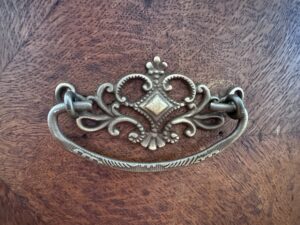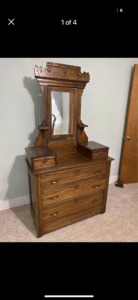This iron piggy bank is a favorite of the children in the family. Sallie French Fitzhugh collected her spare change throughout the year in this bank. When her grandson, Davis, visited, Sallie would “Kill the Pig” and empty out of its contents. After counting up the coins, she and Davis would go to the used bookstore and buy books to enjoy.
Sally Lou Fitzhugh, Sallie’s daughter, continued the tradition and brought the pig, filled with coins, to Mississippi with her during each visit. The four Moore children excitedly killed the pig, and under the careful instruction of high school business teacher Sally Lou, added up the contents and split it equally four ways. The children loved getting a little extra money to spend as they wished, and it was good practice for the children to learn to count and divide the money.
Repairing The Pig
In about 2019, Sally Lou accidentally knocked the pig off a shelf, and it shattered. Davis collected the pieces and glued them back together with JB Weld. When Davis’ grandchildren (Sally Lou’s great-nieces) came out for her funeral in December 2022, they killed the repaired pig again, continuing the family tradition.
For the curious, the pig can hold about $44 when stuffed completely full of quarters and dimes.
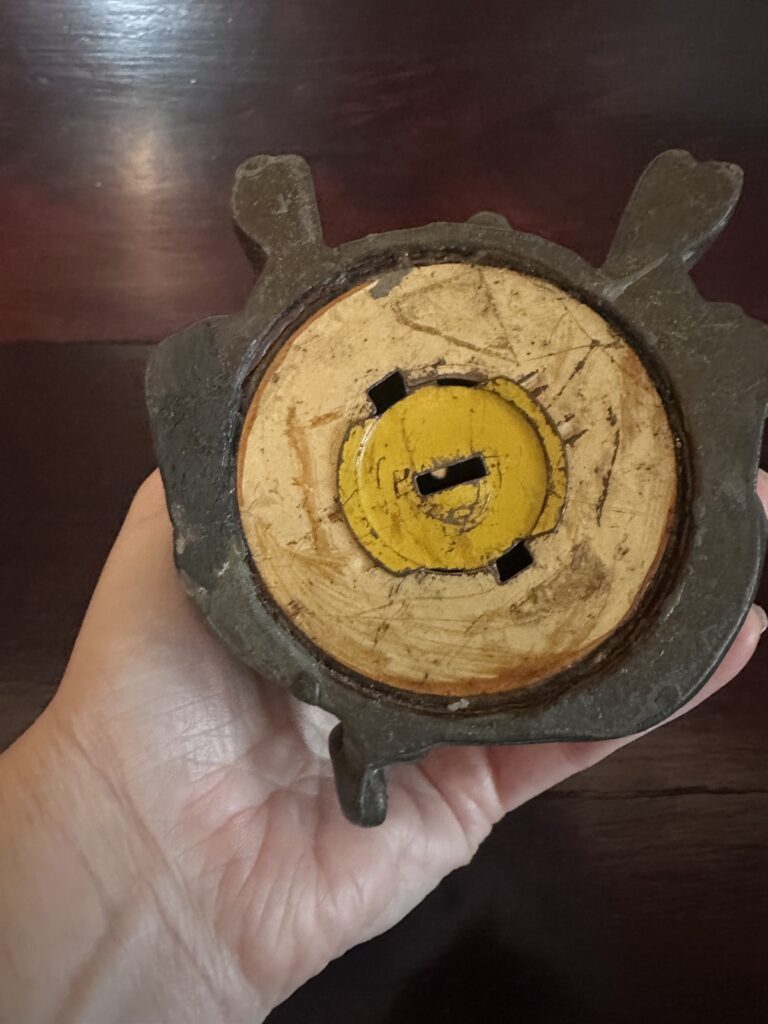
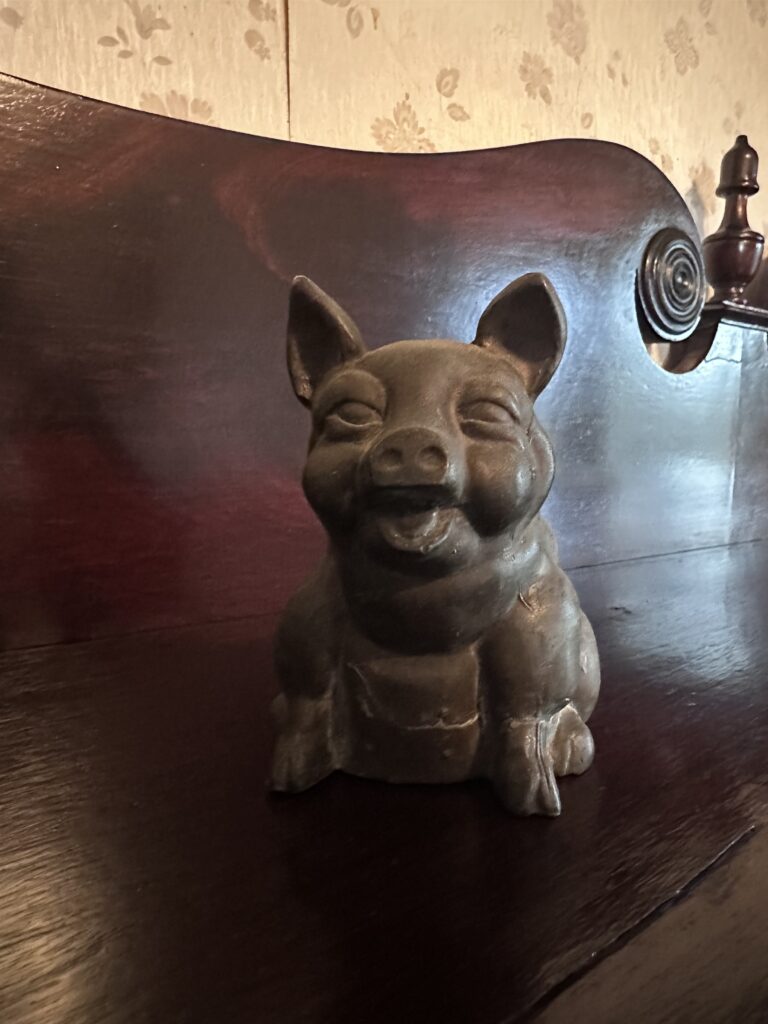
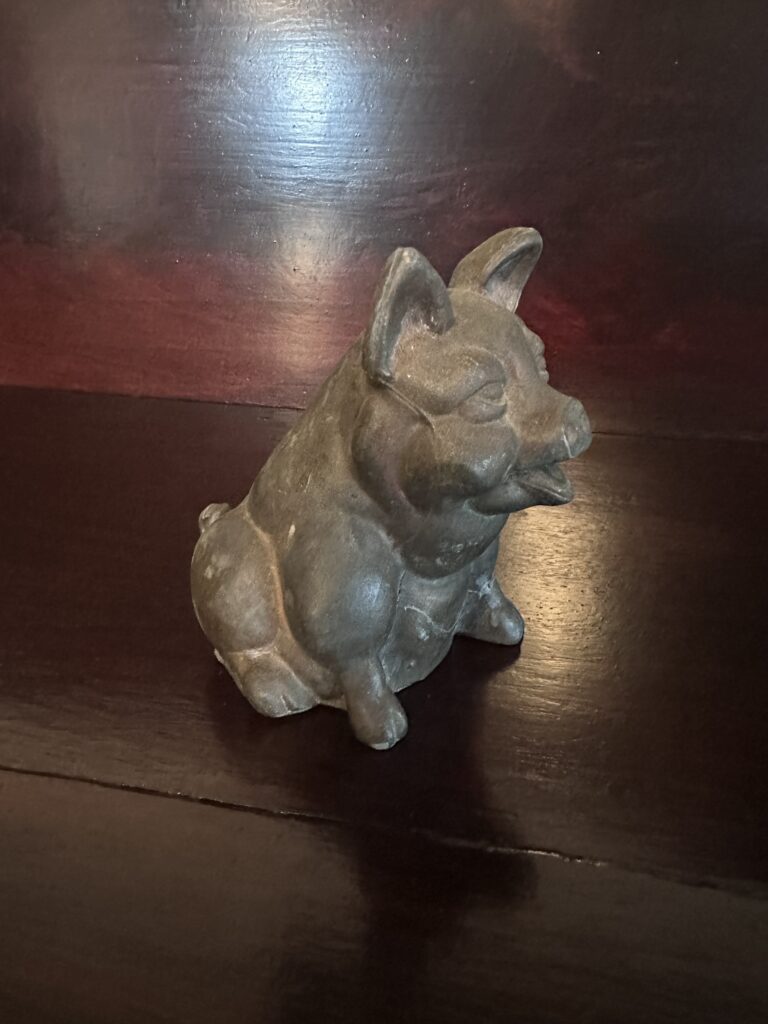
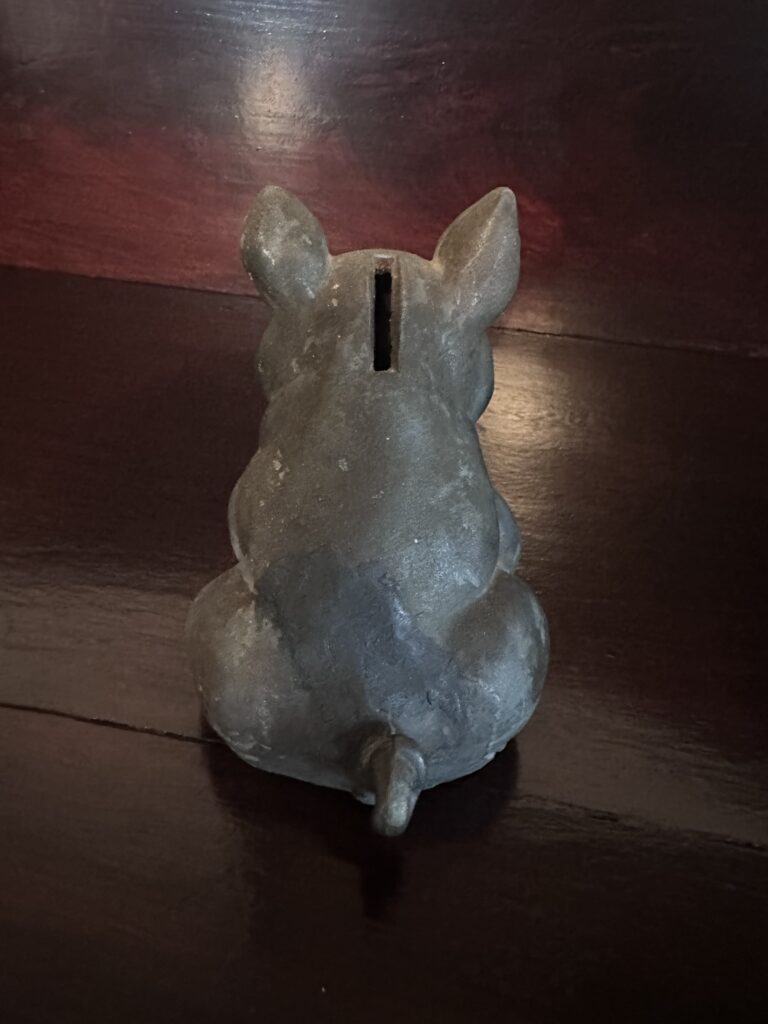
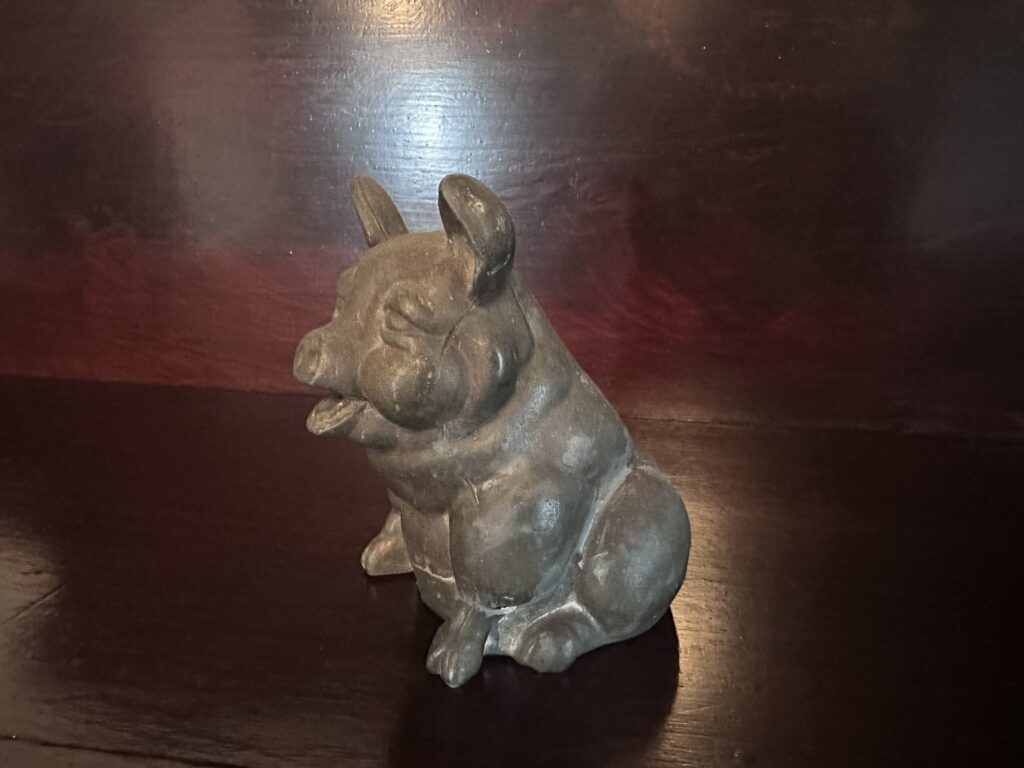
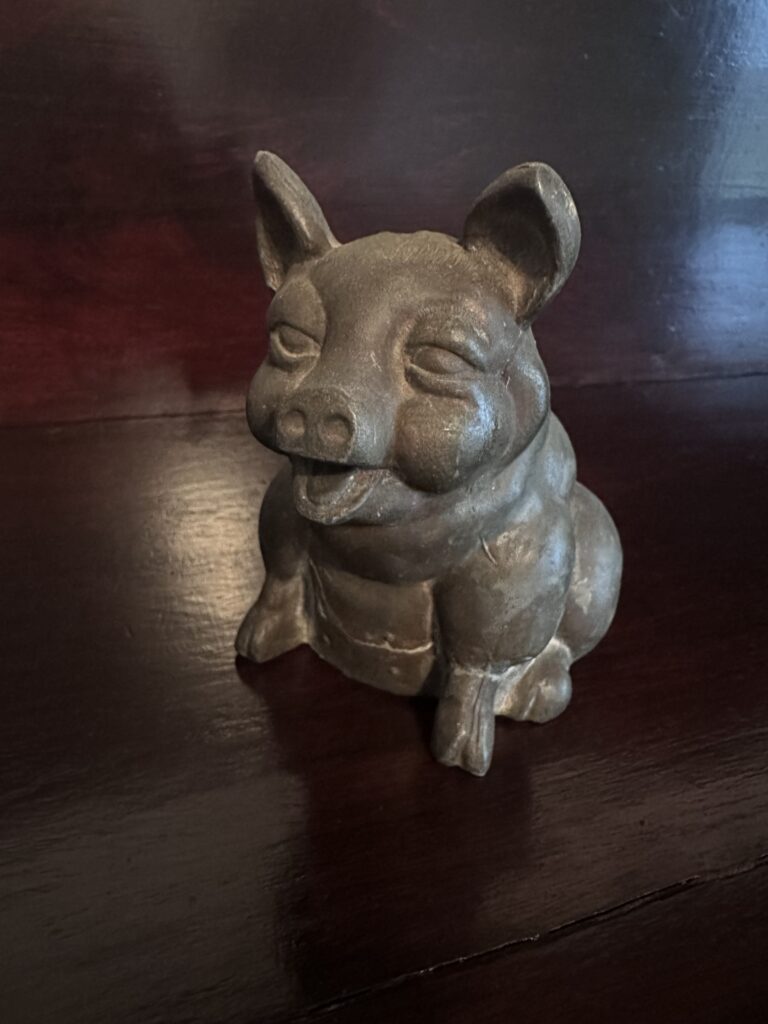
How old is The Pig?
From a Facebook post on collecting cast iron banks:
Collecting Cast Iron Banks is Rewarding and Profitable, especially if you know how to spot OLD ORIGINALS.
The OLDEST Cast Iron Banks were miniature versions of actual Bank Buildings and Safes that you could drop small change into and open from the bottom. Other versions included Animals such as Pigs, a variety of dogs, both sitting and standing, rabbits, Mutt and Jeff Characters and so many more. Banks were either opened at the bottom with a simple metal key, or they came apart by removing a flat-head screw. The FIRST clue to spotting a Reproduction Cast Iron Bank is the TYPE of screw used to hold it together.
A FLAT-HEAD Screw could indicate Antique and Original, but a PHILLIPS-HEAD Screw indicates Modern Reproduction, or REPRO as the collectors call them. There’s nothing wrong with owning a Repro, and they can be enjoyable display items, BUT they have NO antique or collectible value and the price you pay should reflect that. You won’t live long enough to see a REPRO go up in value.
How do you buy GENUINE OLD ORIGINAL Cast Iron Banks at a reasonable price and watch them INCREASE in Value as you get older and enjoy the conversations these gems create? If you attend public auctions or regional antique shows, or of course come to Seneca Cannery Antique Mall in Havre de Grace, you know how hard it is to find a good supply of Cast Iron Banks and Doorstops.
One tip I use for identifying OLD cast iron versus NEW cast iron is the SMELL of old cast iron. It should smell earthy and mushroom-like, especially when wet. Newer cast iron will not have that smell. Another tip is the darkness of the exposed cast iron. OLD cast iron is very dark, almost black and is very smooth to the touch. NEW cast iron is a much lighter silver color, rough edges and may have red rust. OLD cast iron will not have red rust, ever. Red rust indicates new cast iron.
Education is the KEY to buying OLD Cast Iron Banks. The fastest and least expensive tuition you can pay is to buy a good book on Cast Iron Banks for less than $20, study the dozens of examples and their current values, look for qualities such as Smooth Metal Edges, old colors, a reasonable amount of wear and missing paint, and of course, a Flat-Head Screw or old key that allows you to access the money.
Many children used their cast iron banks extensively, both as a bank and as a toy, especially the animal banks like Boston terriers, bulldogs, pigs and rabbits, so expect some paint loss, wear on the edges and minor damage. That simply adds character. Rust, on the other hand, is a big detractor. I’m not talking about simple surface rust. I’m more concerned about severe rust that has pitted the metal, probably from being stored in a damp area or after sitting in water for a period of time. Rust hurts the value A LOT, so buy accordingly. …
There are MANY Reproduction Mechanical Banks so be cautious! Fresh Paint, bright colors and either shiny flat-head screws or phillips-head screws along with rough metal edges are clear indicators of REPRODUCTION mechanical banks or any other bank for that matter. Pay accordingly knowing the value will not go up in your lifetime if they are brand new!
https://www.facebook.com/246731305414302/posts/pfbid028DBHuN3QhF63yEdexrEi43ibemaA4zvsRh3eHEGE2h1soqM7AfqMC8jPtrovMQkbl/ Seneca Candy Antiques
Based on the appearance of The Pig, it probably dates to between 1869 and 1910 (See https://www.tribstar.com/news/lifestyles/historical-treasure-golden-age-of-american-cast-iron-banks-lasted-from-1869-1910/article_9ef90778-f73a-5bbb-b76d-416f6dfa5c83.html ). I’ve not been about to find a pig of this shape to try and determine its age or maker more accurately, so if you can help with identification, please reach out.


